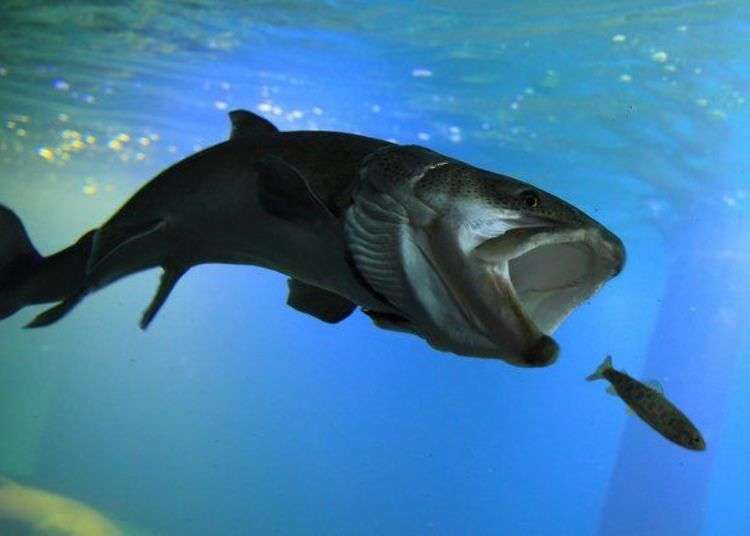
We visited the recently trending Northern Daichi Aquarium, located in Rubeshibe, Hokkaido. With its latest exhibition drawing attention as the first of its kind in the world, it has gained much popularity. At around 600sqm in size, the aquarium may seem somewhat on the smaller scale, but is still a sight to see. Join as we visit this unique spot that can be enjoyed by adults and children alike!
- Table of Contents
-
- At the Foot of the Daisetsuzan Mountains Lies the Noteworthy Aquarium
- The World's First "Hokkaido Earth and River Zone"
- Magical Hot Springs: "Tropical Fish of the World" and "Touch Corner"
- Hokkaido’s Northern Daichi Aquarium: Renovated in 2012, now a popular attraction
- Things to Enjoy Nearby! World's Largest Cuckoo Clock and Kamurin Tower
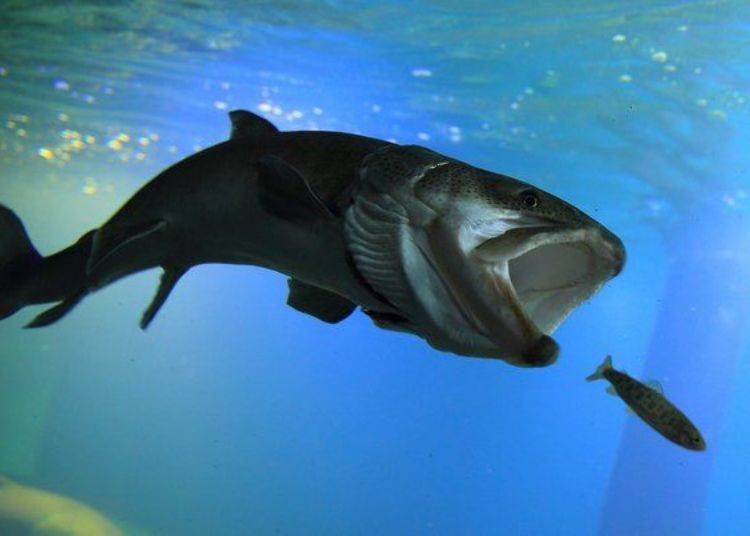
At the Foot of the Daisetsuzan Mountains Lies the Noteworthy Aquarium
The Northern Daichi Aquarium is a 45 minute drive from Kitami City, and located inside the Roadside Rest Area Onneyu-Onsen along Route 39. At its first opening in 1978, it was originally called "Mountain Aquarium," being located at the foot of the Daisetsuzan Mountains.
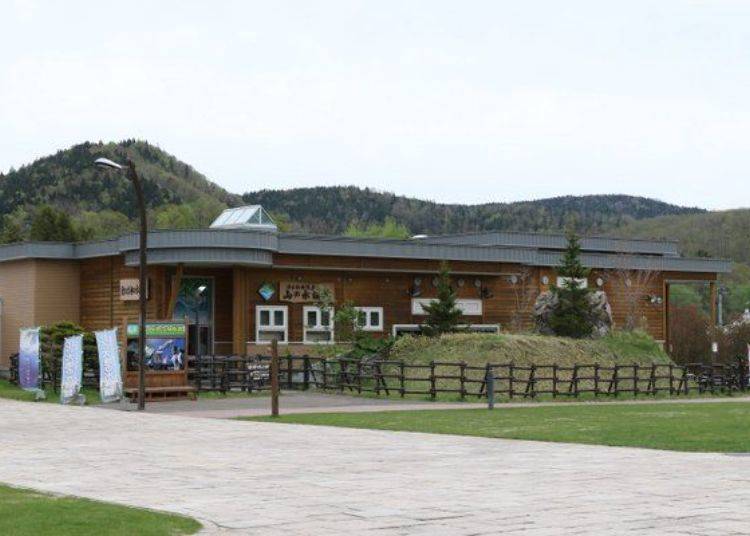
This aquarium specializes in freshwater fish, housing some 3,000 fish and about 50 species, not just from Hokkaido but around the world. It is a popular spot drawing around 100,000 visitors a year, with many unique features such as Japan's first waterfall basin tank, the world's first frozen-over river tank, the most bred-and-raised giant phantom itou fish in Japan, and tropical fish that are raised in hot water.
The World's First "Hokkaido Earth and River Zone"
The entrance fee is ¥670 for adults, ¥440 for junior high children, and ¥300 for elementary school and younger, tax included. First, visit the Hokkaido Earth and River Zone, where you can see the freshwater fish that inhabit Hokkaido as you stroll along the way. As soon as you enter you will see one of the highlights, a tank referred to as the waterfall basin that sparkles with life. It is a half-dome shaped tank, and the first of its kind in Japan where you can get an underwater view looking up from the bottom of the waterfall basin. With this special design you can watch fish like Dolly Varden trout and Japanese salmon, swimming against the raging waters.
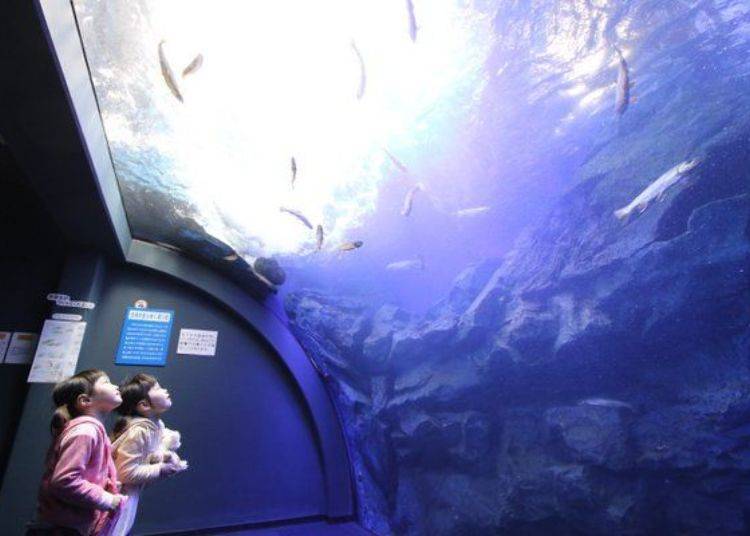
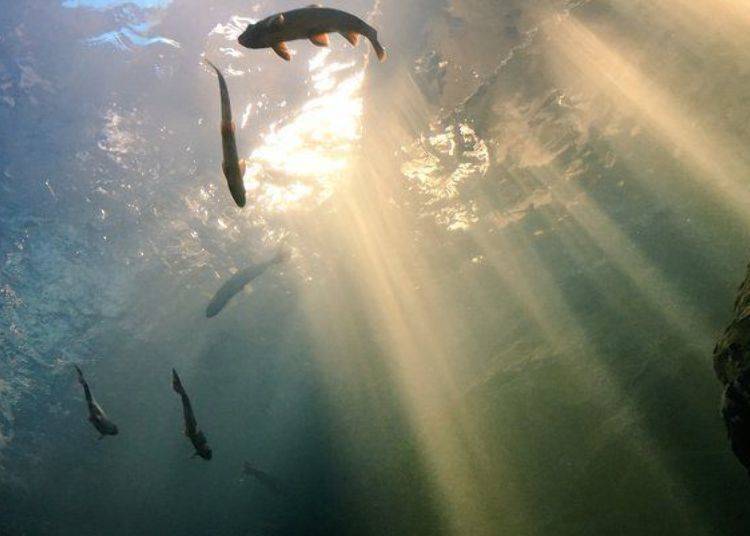
The next exhibit is outdoors, the "Four Seasons of Northern Daichi" tank. Rainbow trout and Japanese char are raised in an environment that reproduces the flow of the river bottom.
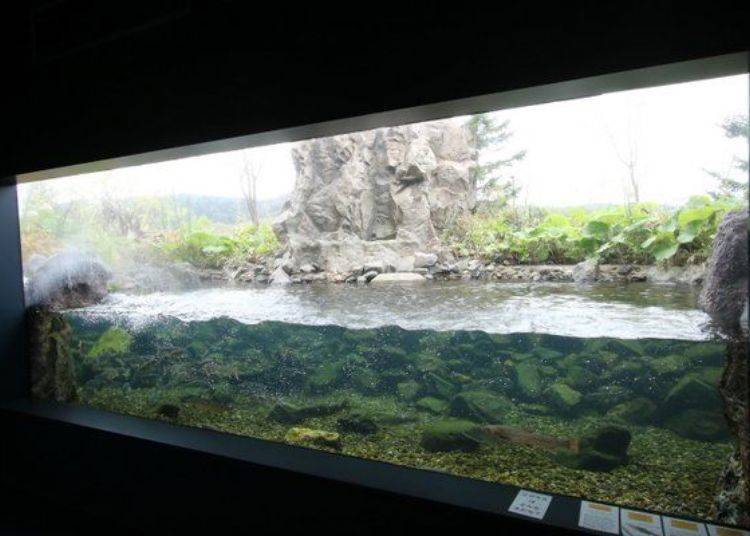
In the coldest season, the surface of the water actually freezes over! You can observe the fish and how they deal with rough winters underwater, which has brought popularity to this place as the world's first freezing aquarium.
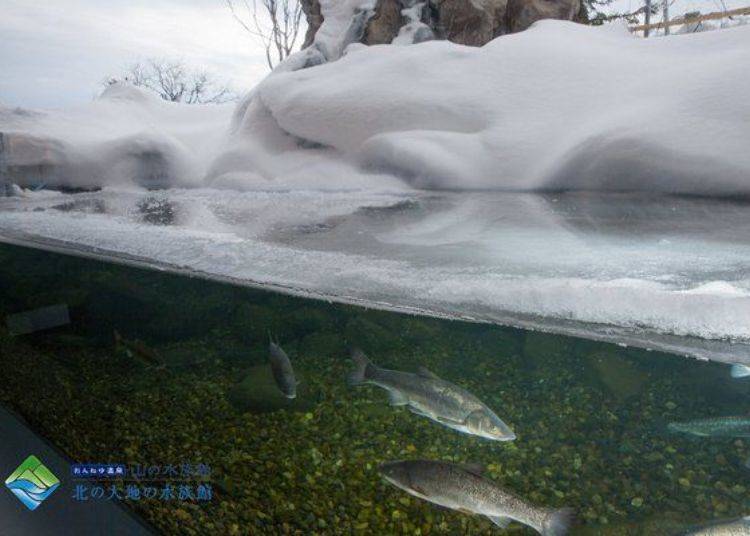
Next, the giant phantom freshwater fish, "itou", or Japanese huchen, is a fish said only to live in regions such as the Kushiro Wetlands of Hokkaido. The image of this 1-meter long fish swimming by was powerful and surprising! About 20 of them were captured from the wild by the staff and raised here using underground water. This aquarium boasts the highest number of these fish raised in captivity in Japan.
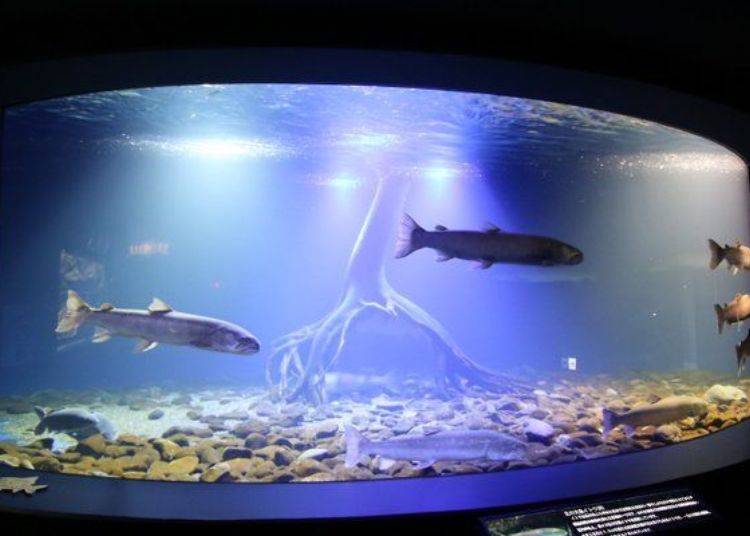
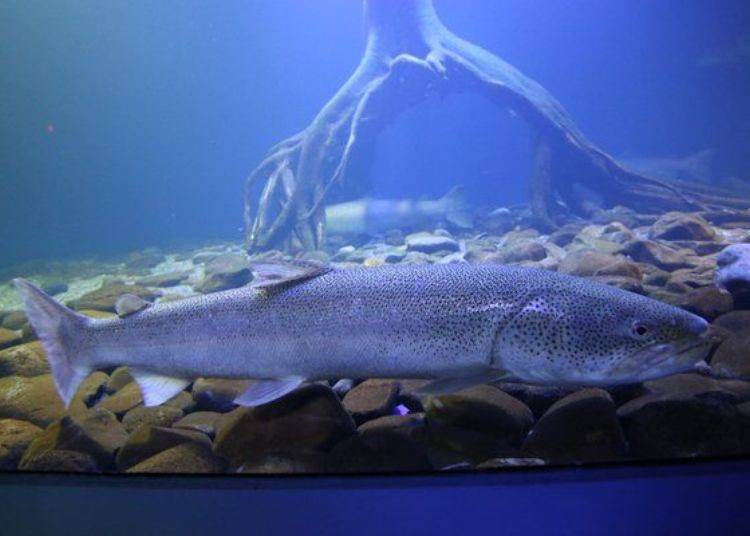
Another program I wanted to check out was the "Live Feeding" activity exhibit, where you can watch the huchen being fed live fish such as rainbow trout. With the powerful image of the fish eating its prey, you really come to understand the circle of life. Regarding the date and time of the exhibit, it is not regularly scheduled so please confirm with the aquarium.
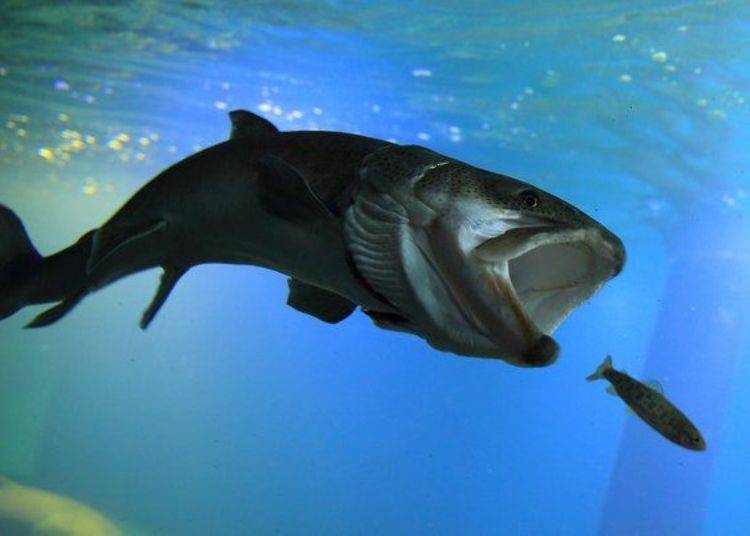
Magical Hot Springs: "Tropical Fish of the World" and "Touch Corner"
After checking out the "Hokkaido Earth and River Zone", the "Tropical Freshwater Fish of the World Zone" is a change in atmosphere. If you were wondering how tropical fish can be kept here in cold Hokkaido, the answer is this: through the hot and cold springs that are found in this area. When these waters mix, you get the perfect environment for breeding tropical fish. They are said to be "magical springs" because the fish grow better than normal here.
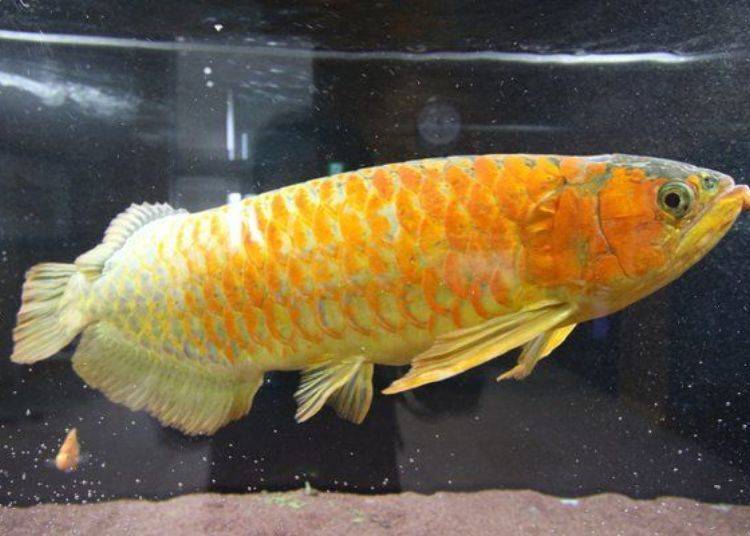
First I saw the huge Neotropical Realm (region from the Amazon through the south tip of North America) tank. The pirarucu, tambaqui, redtail catfish, and tiger shovelnose catfish, with their unique appearance and large bodies, were much different than the fish of Hokkaido I had just seen before.
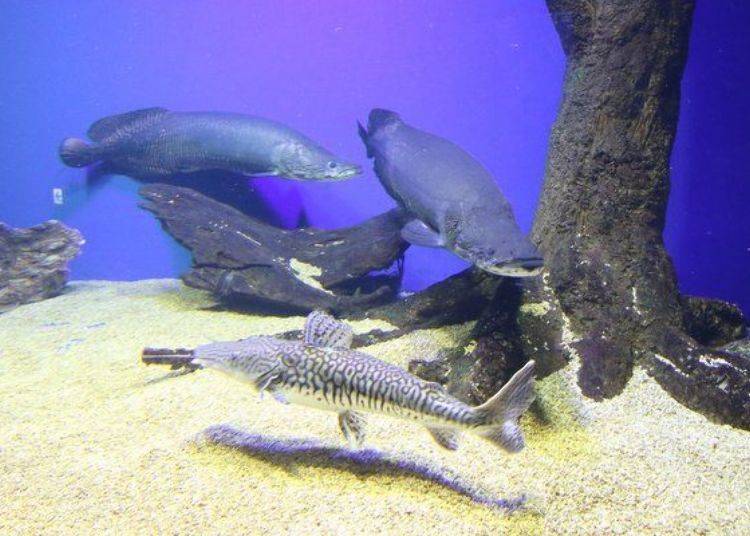
In the "River of Southeast Asia" tank you can see more unique fish such as the arowana, the giant mottled eel, and even pig-nosed turtles. They all look so interesting, and much different from what can be found in the seas and rivers of Hokkaido.
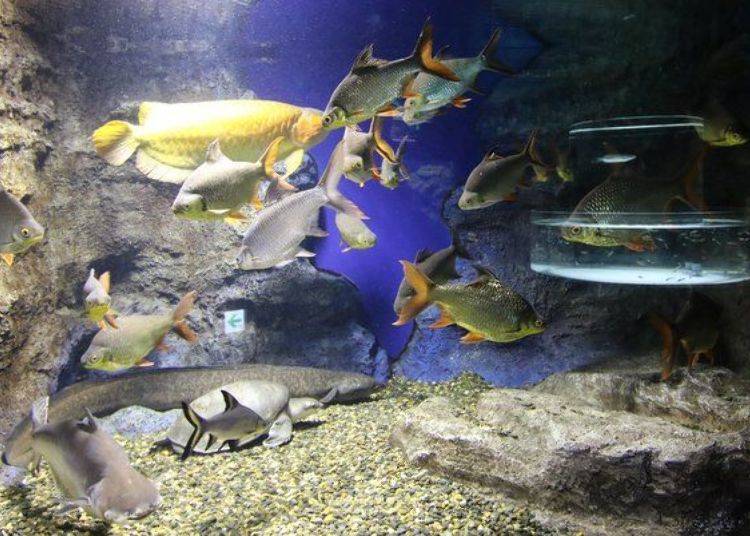
The last tank in the Tropical Freshwater Fish of the World Zone is the African Lake. There are fish that have undergone diverse evolution in the ancient lakes at the western tip of Tanzania (lakes over 100,000 years old) such as Lake Tanganyika, including the Mbu, a giant freshwater puffer fish. This one may be small in size, but its color added to the tank’s magnificence.
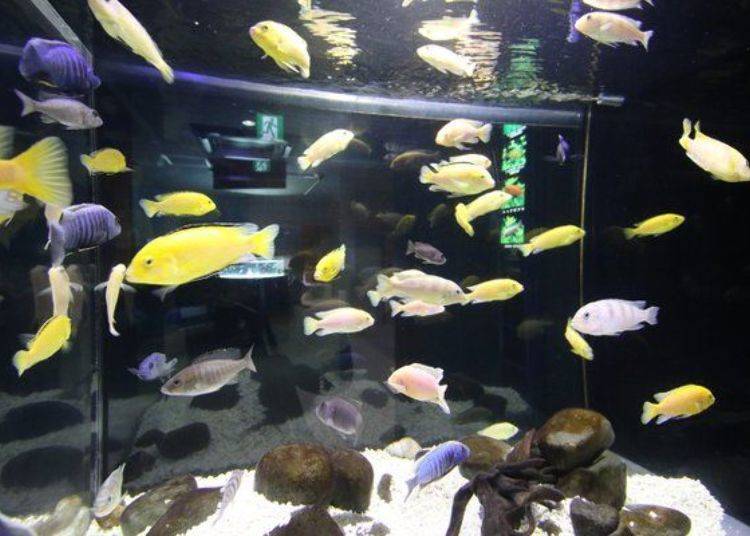
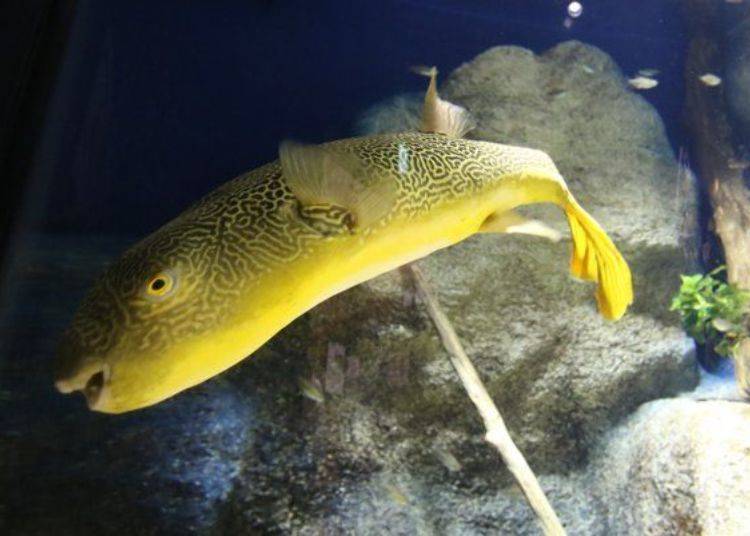
I saw a lot of variety in these fish from around the world, which were much different that the freshwater fish of Hokkaido.
At the end of the path is the Touch Corner. Here you can take a commemorative photo in front of the aquarium gate, and touch doctor fish, which eat off dry skin, plus crayfish, turtles, and more.
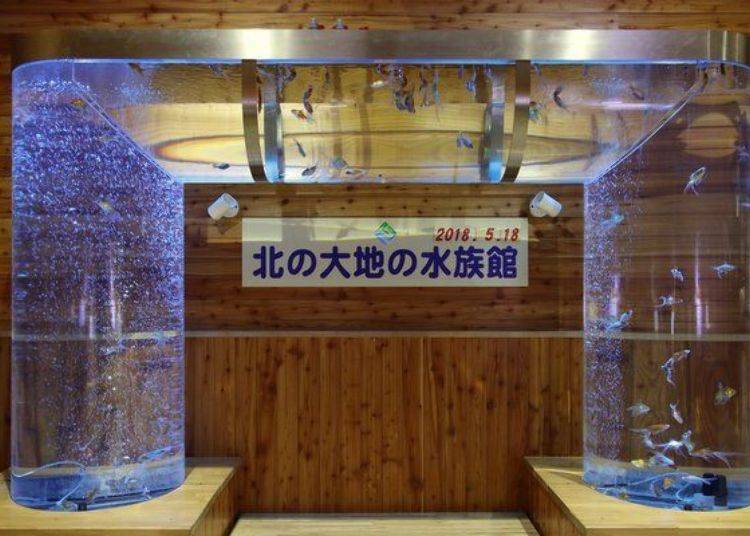
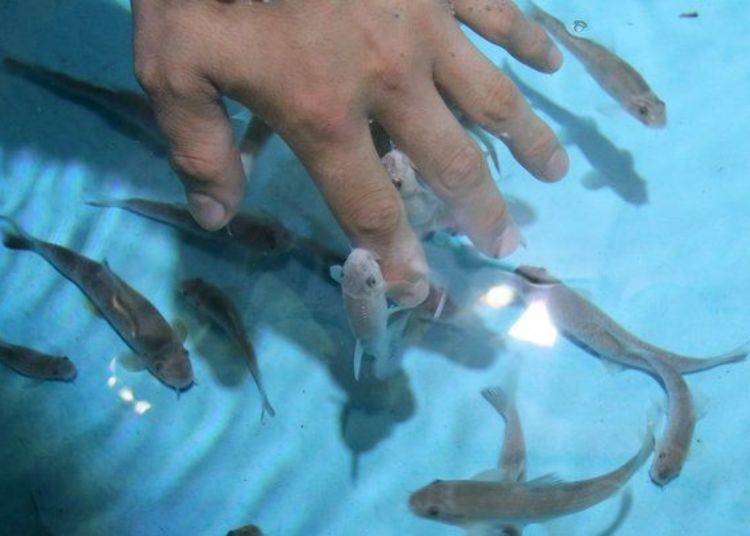
I spent about an hour around the hall looking at all the tanks. Although Hokkaido’s Northern Daichi Aquarium isn't a very large, the content of each tank and exhibition is substantial, making it an aquarium you will want to visit again to see the new season's exhibits.
Hokkaido’s Northern Daichi Aquarium: Renovated in 2012, now a popular attraction
Out of curiosity, I asked the director of the museum, Sou Yamauchi: “What made you establish such a concept aquarium here with so many unique exhibits?”
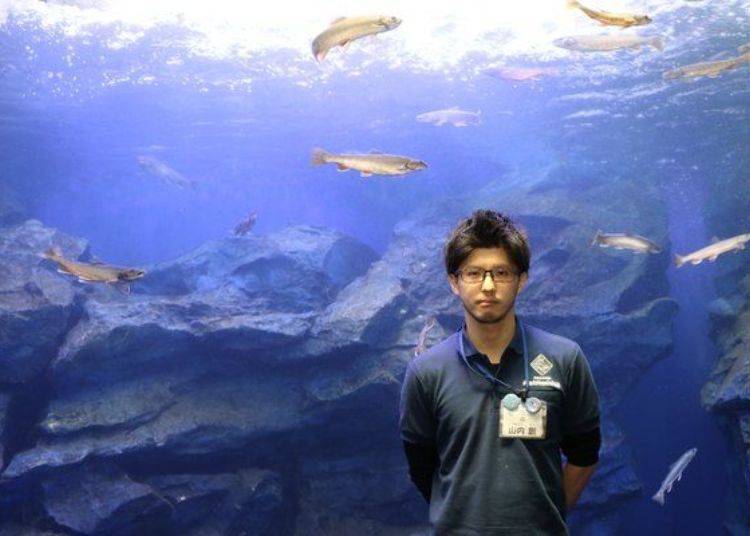
The aquarium originally opened as the "Mountain Aquarium" in 1978. In the beginning it brought in many crowds, however the number of visitors drastically declined due to the decline of the neighboring hot spring towns.
In November 2011 they temporarily closed the building and decided to renew it. They asked the aquarium producer, Hajime Nakamura, who handled the design and composition of exhibition facilities at aquariums such as Enoshima Aquarium and Ikebukuro Sunshine Aquarium, as well as the staff for ideas, and in 2012 it was re-opened as The Northern Daichi Aquarium, which displays the exhibitions that you see now.
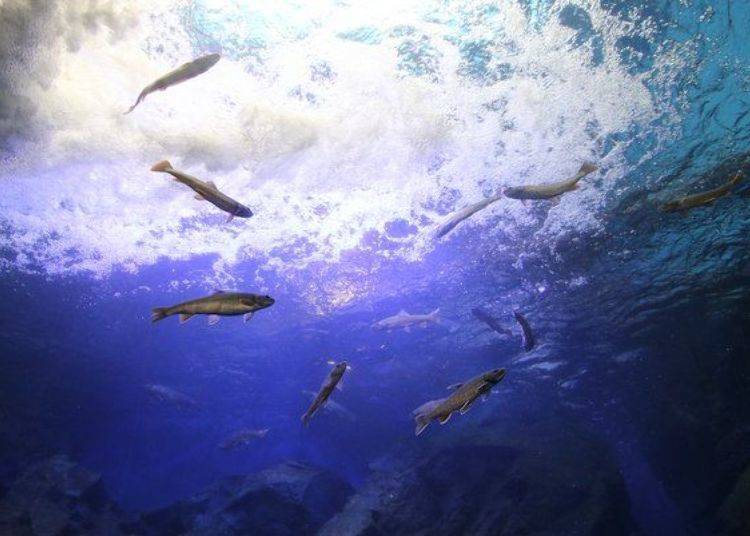
The aquarium’s reputation after its renewal has skyrocketed. The number of annual visitors before the renewal was about 20,000 people, but has increased to about 300,000 in the first year after. Following that, it has remained a popular spot that consistently attracts about 100,000 people each year.
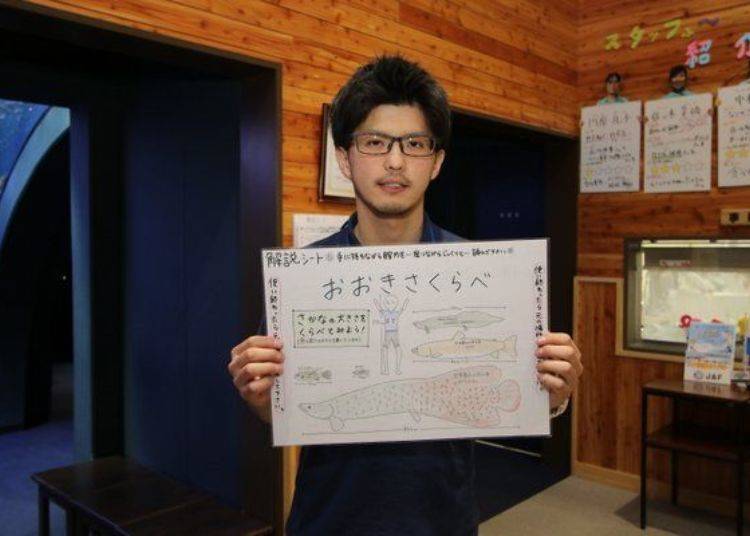
Fish from Hokkaido living in an environment constructed a closely as possible to their natural habitats, and tropical fish bred and raised in magical hot spring waters. It is easy to understand why this exhibition has fascinated so many people. Please visit Hokkaido’s Northern Daichi Aquarium yourself if you get the chance, and take a peek into the mysterious world of fish!
-
Northern Daichi Aquarium北の大地の水族館
- Address 北海道北見市留辺蘂町松山1-4 「道の駅おんねゆ温泉」内/1-4 Matsuyama, Kitami-shi, Rubeshibe-cho, Hokkaido
- Phone Number 0157-45-2223
Roadside Rest Area Onneyu-Onsen
Open: 8:30 AM-5:00 PM (April-October), 9:00 AM-4:30 PM (November-March)
*Admission until 20 minutes before closing
Closed: April 8-14, December 26-January 1
Admission: Adults ¥670, Junior High ¥440, Elementary ¥300 (tax included)
Things to Enjoy Nearby! World's Largest Cuckoo Clock and Kamurin Tower
If you are visiting the Northern Daichi Aquarium, it is recommended to also check out the neighboring Kamurin Tower. It houses the world's largest cuckoo clock, "Kamurin," with a height of 20 m. Every hour between 8:00 AM and 6:00 PM, birds and forest fairies come out to tell us the time.
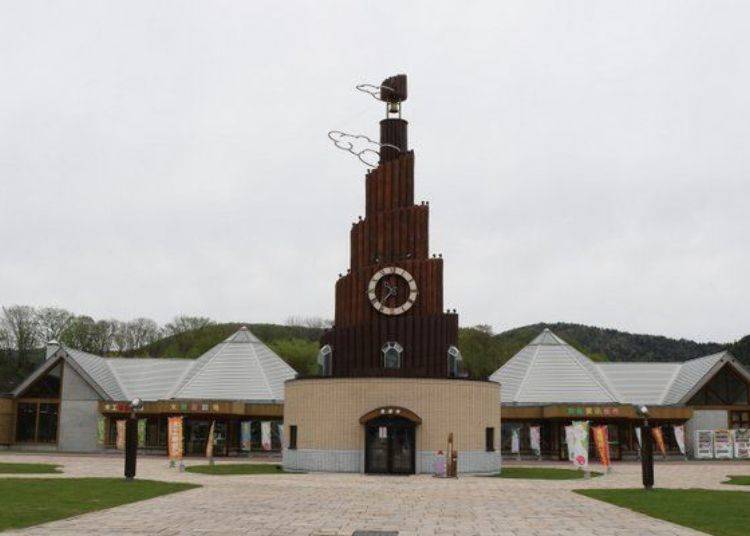
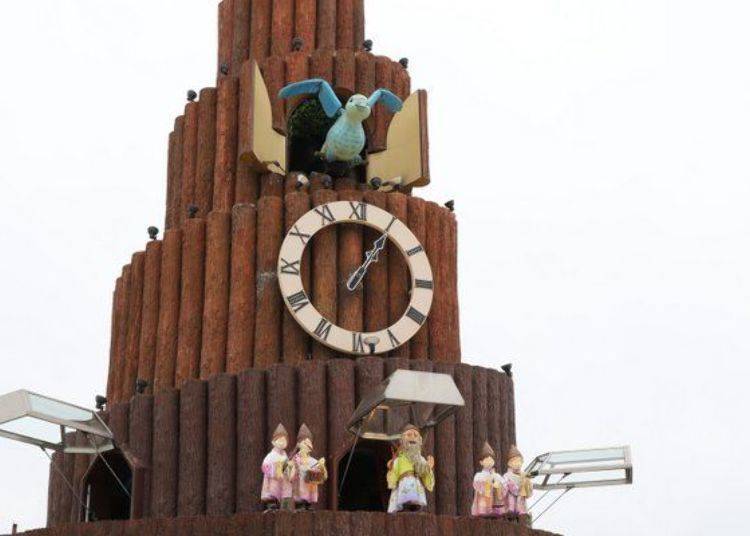
The town of Rubeshibe thrives on forestry. In a building built entirely out of timber, you will find the Kamurin Shop, which sells items produced by local woodworking companies. In Kamurin World, you can play with wooden toys, and in the Craft Studio, you try some woodworking yourself.
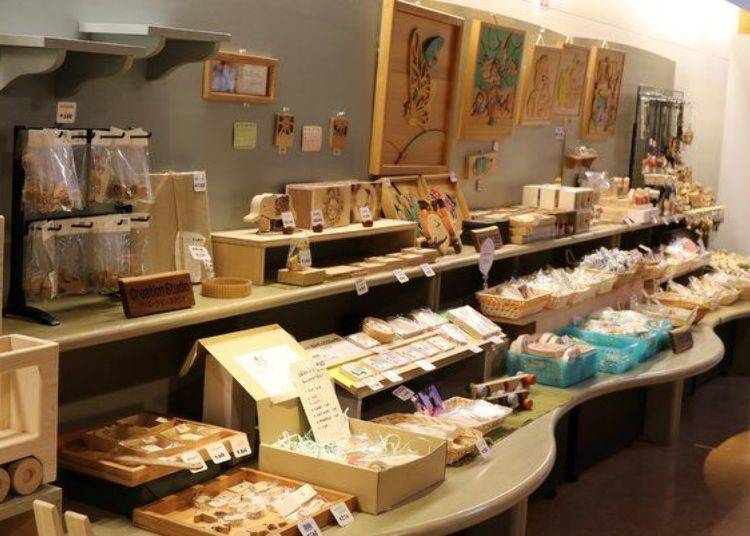
In addition to woodworking products, the Kamurin Shop has a variety of miscellaneous goods, including goods from the Northern Daichi Aquarium, Kitami City specialty mint products, and other assorted local goods and confectionery items. They also have a great selection of souvenirs.
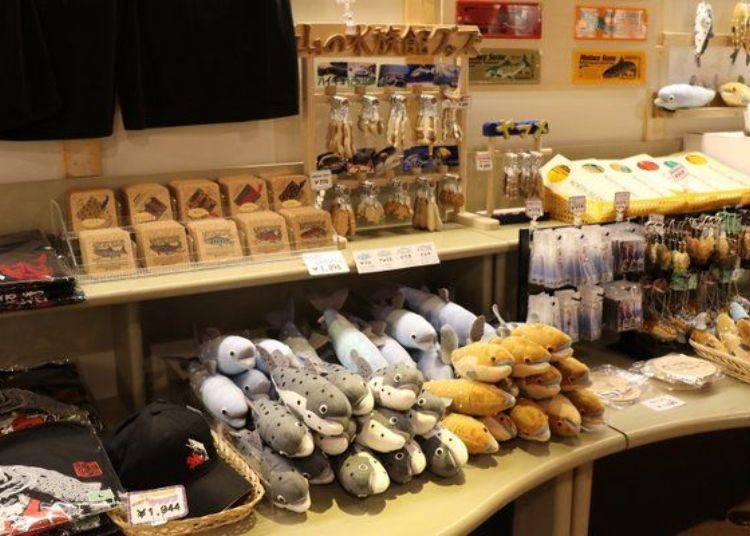
Something I would like to recommend is the Hokkaido cheesecake, Akai Sairo (Red Silo), (¥840 for 5 pieces, tax included). During the 2018 Pyeongchang Olympic Games, the locally based womens' curling team that won a bronze medal, the LS Kitami (or "Loco Solare") talked about eating these during break time, and they sold out immediately. If you happen to see this very popular item, you might want to buy it right away!
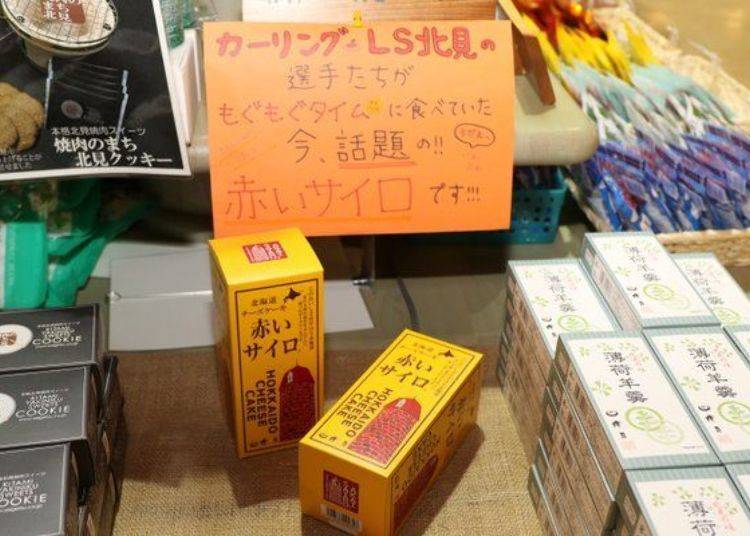
I also want to try the "Shirahana-mame ice cream," or White Bean Ice Cream (¥350, tax included). These white beans boast the largest production volume in Rubeshibe, according to a 2008 survey by Japan Agriculture Group, and have more than three times the dietary fiber of burdock root! Improvement of the intestinal environment and detoxification effects can be expected.
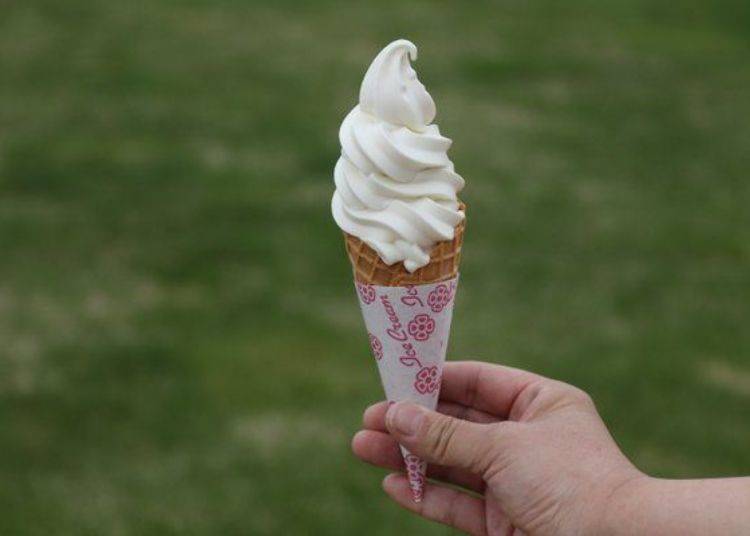
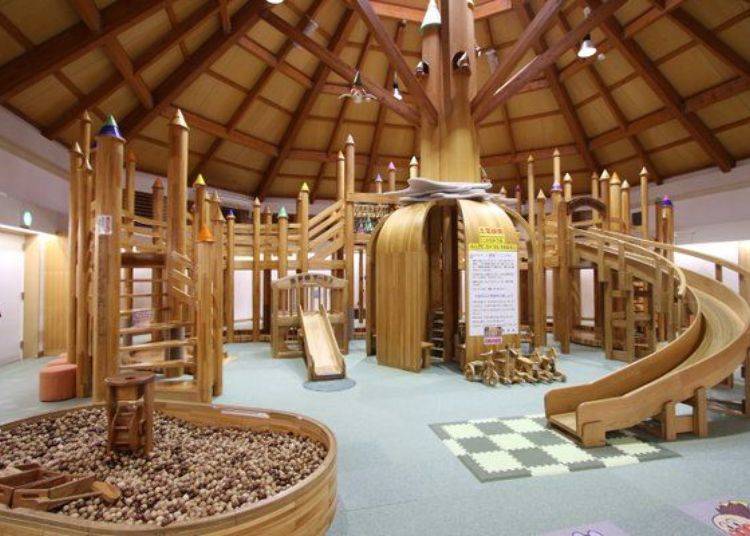
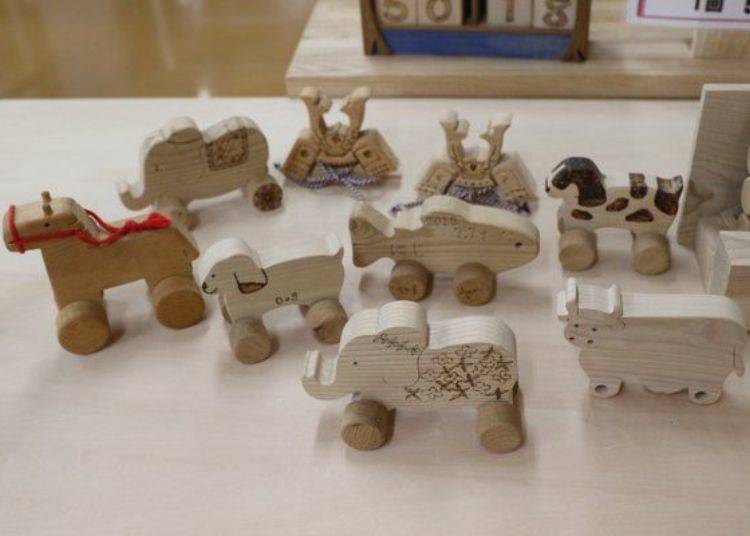
These facilities allow one to fully experience Rubeshibe, the Forest Town. If you visit the aquarium, please be sure to visit this town as well.
-
Kamurin Tower果夢林の館
- Address 北海道北見市留辺蘂町松山1-4 「道の駅おんねゆ温泉」内/1-4 Matsuyama, Kitami-shi, Rubeshibe-cho, Hokkaido
- Phone Number 0157-45-3373
Roadside Rest Area Onneyu-Onsen
Open: 8:30 AM-5:00 PM (April-October), 9:00 AM~ 4:30PM (November-March)
Closed: April 8-14, December 26-January 1
Admission: Free
- Area
- Category
*Prices and options mentioned are subject to change.
*Unless stated otherwise, all prices include tax.
Popular Tours & Activitiess
Recommended places for you
-
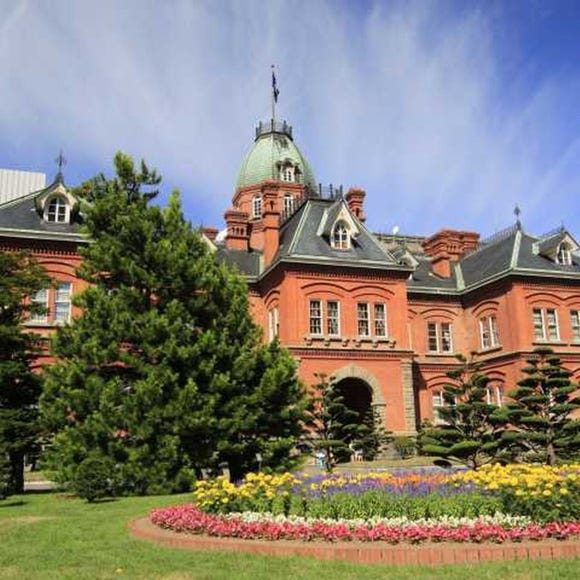
Former Hokkaido Government Office Building (Red Brick Office)
Other Historic Sites
Sapporo / Chitose
-

Lipovitan Kids PLAYLOT by BørneLund
Other Amusement
Sapporo / Chitose
-
Appealing

Mt. Hakodate Observatory
Forests & Mountains
Hakodate
-
Appealing

Odori Park
Parks
Sapporo / Chitose
-
Appealing

Rukku and Uohei
Izakaya
Sapporo / Chitose
-
Appealing

Noboribetsu Onsen
Hot Springs (Onsen) & Bath Houses (Sento)
Noboribetsu / Lake Toya
-
Ad

Smart Ways to Avoid Crowds and Enjoy a Safe, Comfortable Trip to Otaru.
-
Ad

Sapporo SATUDORA Shopping Guide: Get Souvenirs, Medicine & More at This Iconic Drugstore (Special Deal Inside!)
-

Expert-Recommended: 9 Hakodate Hotels Serving Up the Best Breakfasts in Town
by: Nobuka Kawashima
-

7 Iconic Hokkaido locations that will make your Instagram shine
by: Himanshi Shah
-

Step into History at the Ofune World Heritage Site: Explore Hokkaido's Jomon Culture
-
Ad

Smart Ways to Avoid Crowds and Enjoy a Safe, Comfortable Trip to Noboribetsu Onsen
-

Japan's Popular Maruyama Park District Will Be The Highlight Of Your Trip To Sapporo
-

Secrets to Shopping in Japan: Guide to Annual Sales in Japan & Where to Shop
by: Miyu Shimada
-

Hakodate 2-Day Itinerary for Exploring Japan's Foodie North!
-

Exploring Moyuk Sapporo: A New Tanukikoji Landmark with an Aquarium and New Donki Store!
-

Otaru Travel Guide: Inside Hokkaido's Leading Destination (Sightseeing, Food, and Shopping Tips)
-

Tokyo Train Map: Your Essential Guide to Subways and Railways
- #best sushi hokkaido
- #things to do hokkaido
- #best ramen sapporo
- #what to bring to japan
- #new years in tokyo
- #what to buy in ameyoko
- #japanese nail trends
- #what to do in odaiba
- #onsen tattoo friendly tokyo
- #daiso
- #best sweets otaru
- #japanese fashion culture
- #best nature furano
- #japanese convenience store snacks
- #best japanese soft drinks















